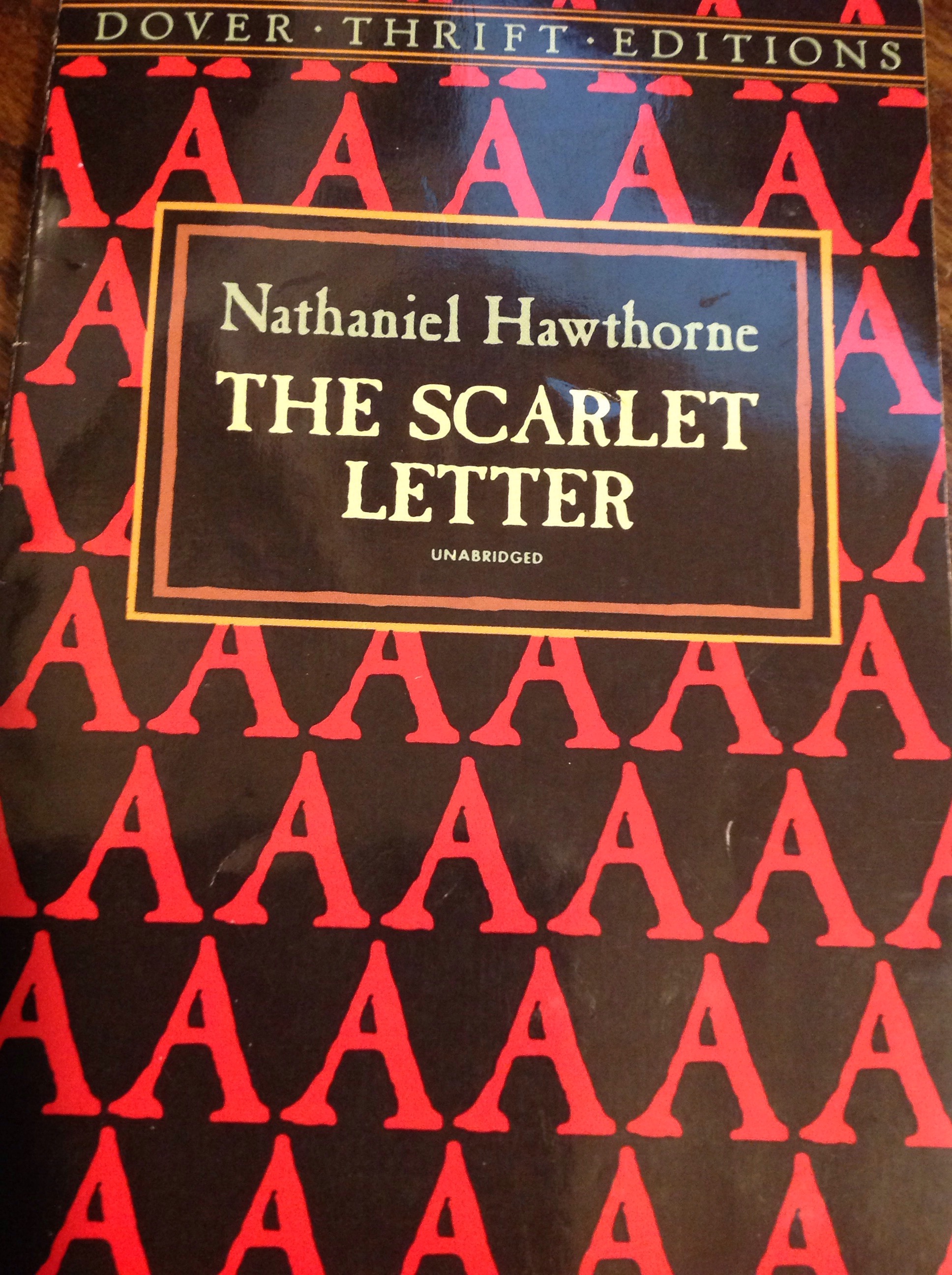Book Review: The Scarlet Letter

This is the third time I’ve read this book. And the first time I’ve finished it. I wouldn’t say I didn’t like it the first two times. But, it was like eating paste. It’s not that it’s necessarily bad, but eventually you get tired of chewing on it.
I didn’t understand the book at all. I’m not sure I do this time either. After all, this is one of the greatest books every written according to most lists. I don’t pretend to understand the Nathaniel Hawthorne’s brilliant use of imagery, foreshadowing, or any of a dozen other literary devices that he utilized and very possibly pioneered.
Originally published in 1850 in Boston, it tells a story set centuries earlier, before the birth of this grand American Experiment. Many later writers cited Hawthorne and this work specifically as influential in their own growth as writers.
The most elemental aspects of the story are probably familiar to you. A woman Hester Prynne committed adultery. As a result she has to wear the letter “A” as a badge of shame. Oh, and no surprise, the handsome young preacher is the father of her illegitimate daughter, Pearl.
That much I knew from the last two times I tried to read it.
For some reason, this time it wasn’t just paste in my mouth. I was able to peak into the world of 1850 and like a reflection of a reflection, I was also able to see an 1850 view of the seventeenth century and Puritan Salem.
I was surprised at how short the book was. At 180 pages, I had to check (several times) to make sure I wasn’t reading a Cliff Notes version. (Yeah, that’s a dated reference, but I’m leaving it there.)
The story is surprisingly modern for a book that is 170 years old. There were twists that I didn’t see coming and sometimes surprises about the parts I did see coming.
At times reading it was like watching opening the back of a pocket watch and watching it work. I can see great craftsmanship, but I don’t pretend to understand very much of it at all.
What I Liked
Like Tess of the d’Urbervilles, that I recently reviewed, Hawthorne spends much more time than modern stories on descriptions. The action is pretty simple, but the descriptions of the the Custom House, the woods, the stage where the condemned stand, they went at great length and were expertly done. I enjoyed how Hawthorne developed the story and the characters.
He breathed great life into a story from hundreds of years ago.
What I Didn’t
At certain times, I could still taste the paste from the first two attempts. The first chapter, “The Custom House” seemed like a chapter out of the wrong book. Several times, I stepped out of the story to again literally check the copyright data to make sure I was reading “The Scarlet Letter by Hawthorne.” Even now, I’m not sure what that first chapter was supposed to do.
Also, like my problem with Tess, there were times where the span of years and their impact on written English was simply too great. Phrases, settings, even social mores were sometimes challenging to understand.
What It Means To You
I put “The Scarlet Letter ” on my list of books to read before I die. If you have such a list, this masterpiece by Hawthorne would be a worthy addition. And it’s a not a long book. But, having finally made it to the end, I have no desire to again tread the streets of Salem with Prynne, Pearl and the people early New England.
My Rating
It may be one of the greatest books every written, but any book that I have to try three times to finish, gets no better than a 3 of 4 stars.
Stay safe
Rodney M Bliss is an author, columnist and IT Consultant. His blog updates every weekday. He lives in Pleasant Grove, UT with his lovely wife, thirteen children and grandchildren.
Follow him on
Twitter (@rodneymbliss)
Facebook (www.facebook.com/rbliss)
LinkedIn (www.LinkedIn.com/in/rbliss)
or email him at rbliss at msn dot com(c) 2020 Rodney M Bliss, all rights reserved
